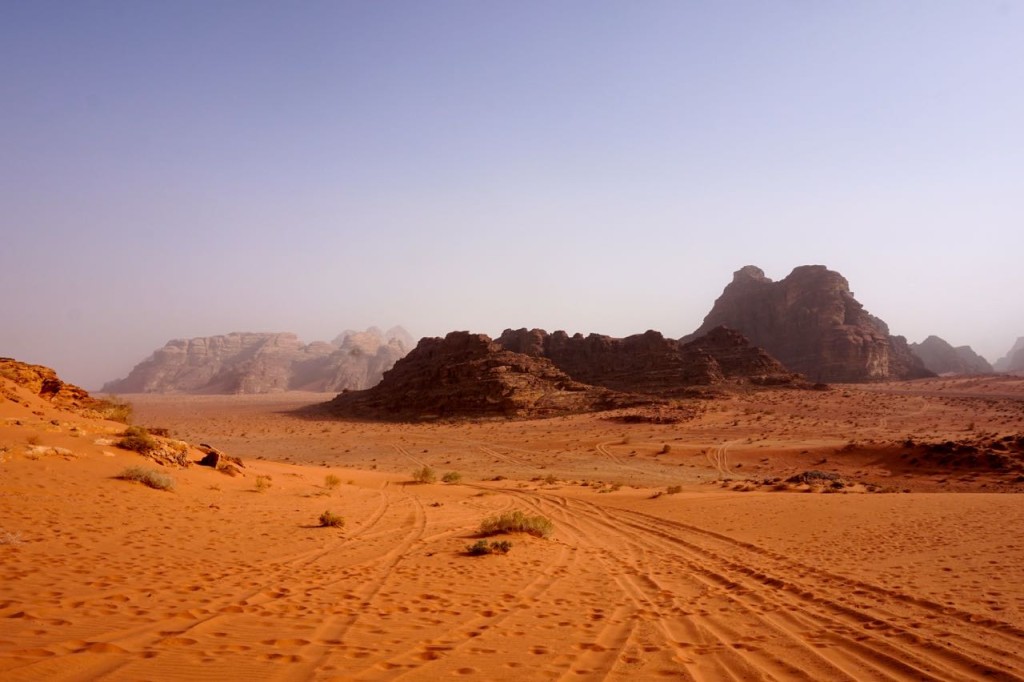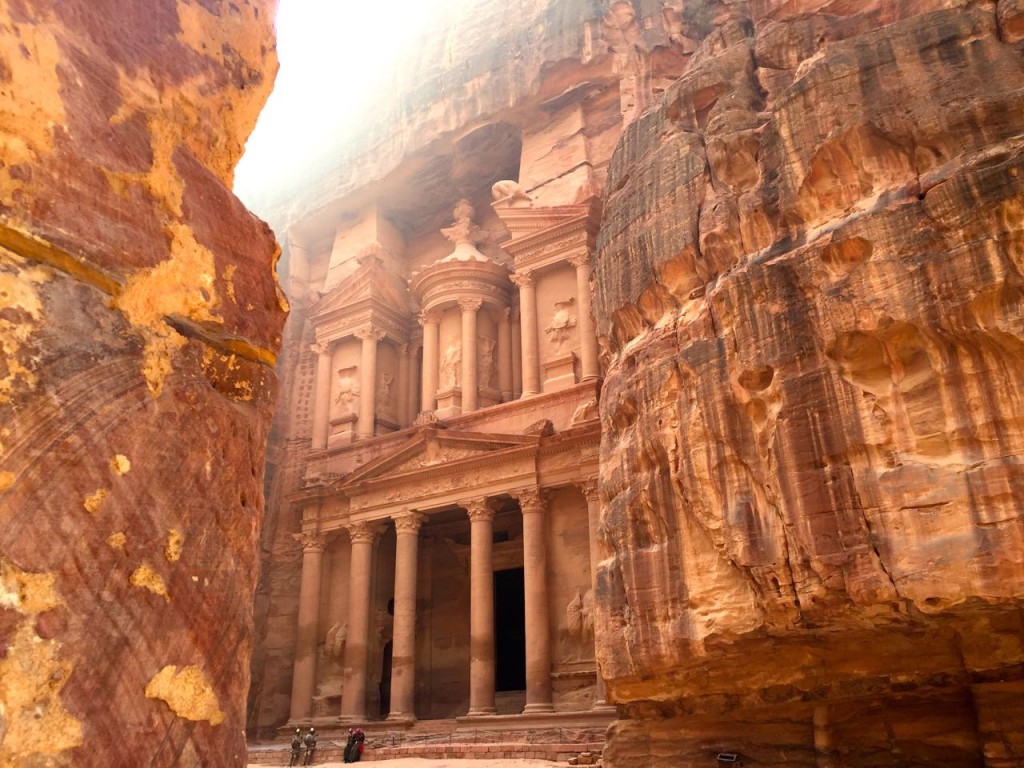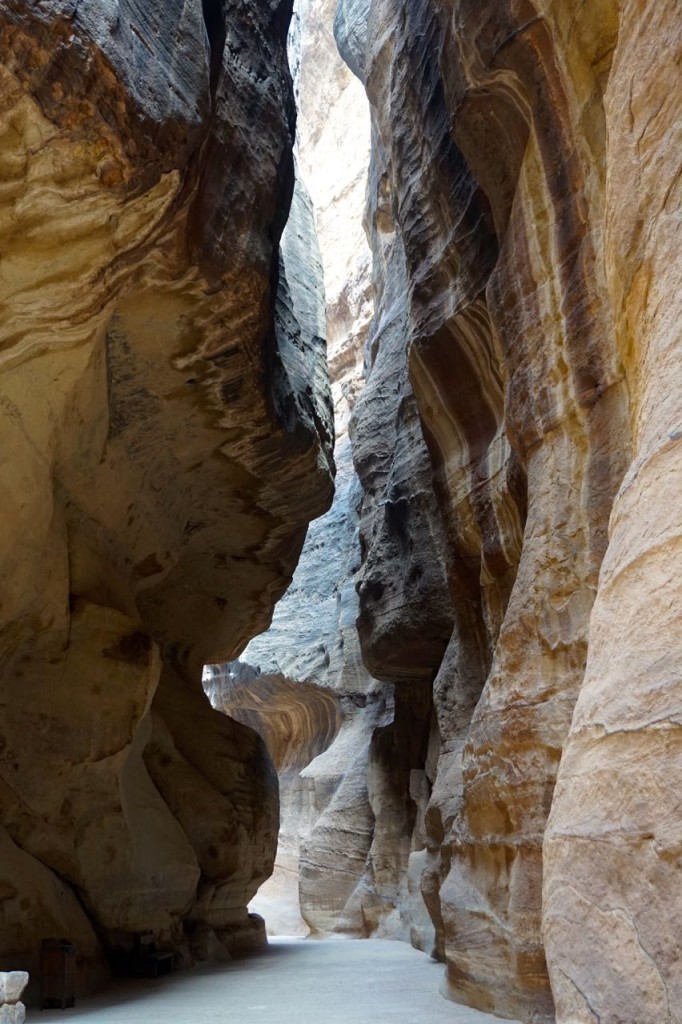I met Mr. Yousef Hasanat, founder of Desert Paramours Tours through a mutual friend. He arranged for my visit from Israel to Jordan on a short notice, and he welcomed me to his country over tea. We met in the lobby of Hotel Amra Palace in Petra. It was always my dream to see this magical city, but once I arrived there, I was surprised to learn about the state of tourism in the area.
Hasanat told me that because of the unrest in the Middle East, fewer visitors are making their way to Jordan now. As a result, the economy is suffering. This family-run tourist agency, that specializes in active adventure trips across Jordan, Israel, Syria and Egypt has been affected as a result. Before, Hasanat and his brothers use to be occupied every week leading groups to camp, hike, canoe, horseback, and engage in other outdoor activities throughout the desserts. Now, they get a few groups from Europe and Australia. They make a lot less money and have to explore new areas for income.
The ruins of Petra are still a spectacular site, one of the wonders of the world, I must say. You can be lost in the old city for hours and days, exploring each section, taking photos as the rocks change colors with the movement of the sun. I took over 1,000 photos in one day!
Once you come out of the old city though, there are hardly any hotels, restaurants or shops. “There use to be many 5-star hotels, but most of them closed,” Hasanat informs me. It was surprising for me to see that such a unique destination is hardly commercialized. I eat a modest buffet dinner at the hotel, along with the 30 or so other tourists staying there.
On another day, we visit Wadi Rum, another popular destination in Jordan. We reach a desert camp that offers lodging, dining and sightseeing options. I am the only visitor they have today. The entire lodge is deserted. My Bedouin driver takes me in a rustic jeep for a 2-hour long safari. We drive through sand dunes, colored cliffs, stopping to take pictures, and see thousands of years old inscriptions. On the way, we visit, several Bedouin camps, where tea and souvenirs are offered. My 21-year old driver who speaks good English tells me that he was born and brought up in this desert and has never left the place. He learned English only by interacting with tourists.
During most of our tour, no one else is in sight, which offers great photo opportunities, but also a reminder of the sad reality this land faces.
 I am curious to know what are other places in Jordan I must explore if I have more time. Hasanat offers a 11-day tour that takes you through castles of Azraq and Amra in the East, Lake Tiberias and the Golan Heights in the North, Petra and Wadi Rum in the South, and to get bird’s eyes view of Mount Nebo, Holy Land and the Dead Sea in the West. His tours offer a combination of history, culture and adventure.
I am curious to know what are other places in Jordan I must explore if I have more time. Hasanat offers a 11-day tour that takes you through castles of Azraq and Amra in the East, Lake Tiberias and the Golan Heights in the North, Petra and Wadi Rum in the South, and to get bird’s eyes view of Mount Nebo, Holy Land and the Dead Sea in the West. His tours offer a combination of history, culture and adventure.
What I did feel in Jordan was a sense of appreciation. Everyone I met, be it guides, hotel staff or shop vendors, was grateful that I had made a decision to visit, despite the negative perception about the area. People went out of their way to ask if I was having a pleasant stay and if there’s anything they could help me with. The truth is that I never felt unsafe here. Jordan remains to be a peaceful country that is politically stable, and safeguards its tourists. It offers aid to refugees and trades with it’s neighbors. This may be the ideal time to visit Jordan for those looking to travel to a secluded area, with rich history, tons of outdoor adventures, and amazing photographic opportunities.


